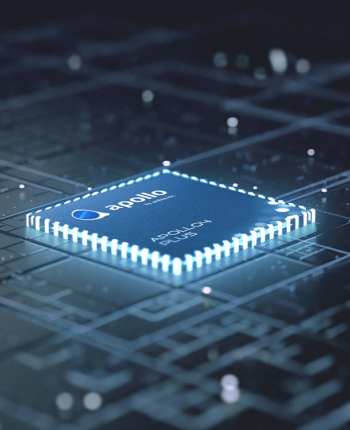Practical ultra-low power endpointai Fundamentals Explained
Practical ultra-low power endpointai Fundamentals Explained
Blog Article

Prompt: A Samoyed along with a Golden Retriever dog are playfully romping through a futuristic neon city at night. The neon lights emitted within the close by structures glistens off of their fur.
more Prompt: A cat waking up its sleeping owner demanding breakfast. The proprietor tries to ignore the cat, although the cat attempts new practices and finally the owner pulls out a magic formula stash of treats from beneath the pillow to hold the cat off somewhat extended.
Prompt: A cat waking up its sleeping owner demanding breakfast. The operator tries to disregard the cat, but the cat attempts new tactics And eventually the owner pulls out a solution stash of treats from under the pillow to carry the cat off a bit for a longer period.
This post focuses on optimizing the energy performance of inference using Tensorflow Lite for Microcontrollers (TLFM) being a runtime, but most of the techniques implement to any inference runtime.
Our network is actually a function with parameters θ theta θ, and tweaking these parameters will tweak the produced distribution of images. Our target then is to locate parameters θ theta θ that develop a distribution that closely matches the genuine information distribution (for example, by using a little KL divergence reduction). Therefore, it is possible to imagine the inexperienced distribution starting out random then the schooling method iteratively transforming the parameters θ theta θ to stretch and squeeze it to higher match the blue distribution.
Still despite the extraordinary results, scientists still usually do not realize specifically why growing the number of parameters leads to raised performance. Nor have they got a deal with to the toxic language and misinformation that these models study and repeat. As the original GPT-3 team acknowledged in a very paper describing the know-how: “World wide web-trained models have Web-scale biases.
SleepKit supplies several modes that can be invoked for just a supplied activity. These modes may be accessed by using the CLI or right inside the Python offer.
The creature stops to interact playfully with a gaggle of little, fairy-like beings dancing all over a mushroom ring. The creature appears to be like up in awe at a significant, glowing tree that is apparently the guts with the forest.
Besides us creating new approaches to organize for deployment, we’re leveraging the prevailing protection strategies that we built for our products that use DALL·E 3, which happen to be applicable to Sora in addition.
Following, the model is 'educated' on that facts. Ultimately, the experienced model is compressed and deployed for the endpoint equipment the place they'll be place to work. Each of such phases needs sizeable development and engineering.
They can be driving image recognition, voice assistants as well as self-driving vehicle Edge intelligence technologies. Like pop stars around the new music scene, deep neural networks get all the eye.
The landscape is dotted with lush greenery and rocky mountains, creating a picturesque backdrop for that train journey. The sky is blue along with the sun is shining, generating for a beautiful day to take a look at this majestic spot.
The Artasie AM1805 evaluation board gives a straightforward strategy to evaluate and Appraise Ambiq’s AM18x5 true-time clocks. The analysis board involves on-chip oscillators to offer least power intake, entire RTC features like battery backup and programmable counters and alarms for timer and watchdog features, as well as a Computer serial interface for communication having a host controller.
Today’s recycling methods aren’t intended to offer very well with contamination. According to Columbia University’s Local weather College, solitary-stream recycling—wherever individuals place all supplies in to the identical bin contributes to about one particular-quarter of the fabric staying contaminated and as a consequence worthless to buyers2.
Accelerating smart homes for embedded system the Development of Optimized AI Features with Ambiq’s neuralSPOT
Ambiq’s neuralSPOT® is an open-source AI developer-focused SDK designed for our latest Apollo4 Plus system-on-chip (SoC) family. neuralSPOT provides an on-ramp to the rapid development of AI features for our customers’ AI applications and products. Included with neuralSPOT are Ambiq-optimized libraries, tools, and examples to help jumpstart AI-focused applications.
UNDERSTANDING NEURALSPOT VIA THE BASIC TENSORFLOW EXAMPLE
Often, the best way to ramp up on a new software library is through a comprehensive example – this is why neuralSPOt includes basic_tf_stub, an illustrative example that leverages many of neuralSPOT’s features.
In this article, we walk through the example block-by-block, using it as a guide to building AI features using neuralSPOT.
Ambiq's Vice President of Artificial Intelligence, Carlos Morales, went on CNBC Street Signs Asia to discuss the power consumption of AI and trends in endpoint devices.
Since 2010, Ambiq has been a leader in ultra-low power semiconductors that enable endpoint devices with more data-driven and AI-capable features while dropping the energy requirements up to 10X lower. They do this with the patented Subthreshold Power Optimized Technology (SPOT ®) platform.
Computer inferencing is complex, and for endpoint AI to become practical, these devices have to drop from megawatts of power to microwatts. This is where Ambiq has the power to change industries such as healthcare, agriculture, and Industrial IoT.
Ambiq Designs Low-Power for Next Gen Endpoint Devices
Ambiq’s VP of Architecture and Product Planning, Dan Cermak, joins the ipXchange team at CES to discuss how manufacturers can improve their products with ultra-low power. As technology becomes more sophisticated, energy consumption continues to grow. Here Dan outlines how Ambiq stays ahead of the curve by planning for energy requirements 5 years in advance.
Ambiq’s VP of Architecture and Product Planning at Embedded World 2024
Ambiq specializes in ultra-low-power SoC's designed to make intelligent battery-powered endpoint solutions a reality. These days, just about every endpoint device incorporates AI features, including anomaly detection, speech-driven user interfaces, audio event detection and classification, and health monitoring.
Ambiq's ultra low power, high-performance platforms are ideal for implementing this class of AI features, and we at Ambiq are dedicated to making implementation as easy as possible by offering open-source developer-centric toolkits, software libraries, and reference models to accelerate AI feature development.
NEURALSPOT - BECAUSE AI IS HARD ENOUGH
neuralSPOT is an AI developer-focused SDK in the true sense of the word: it includes everything you need to get your AI model onto Ambiq’s platform. You’ll find libraries for talking to sensors, managing SoC peripherals, and controlling power and memory configurations, along with tools for easily debugging your model from your laptop or PC, and examples that tie it all together.
Facebook | Linkedin | Twitter | YouTube